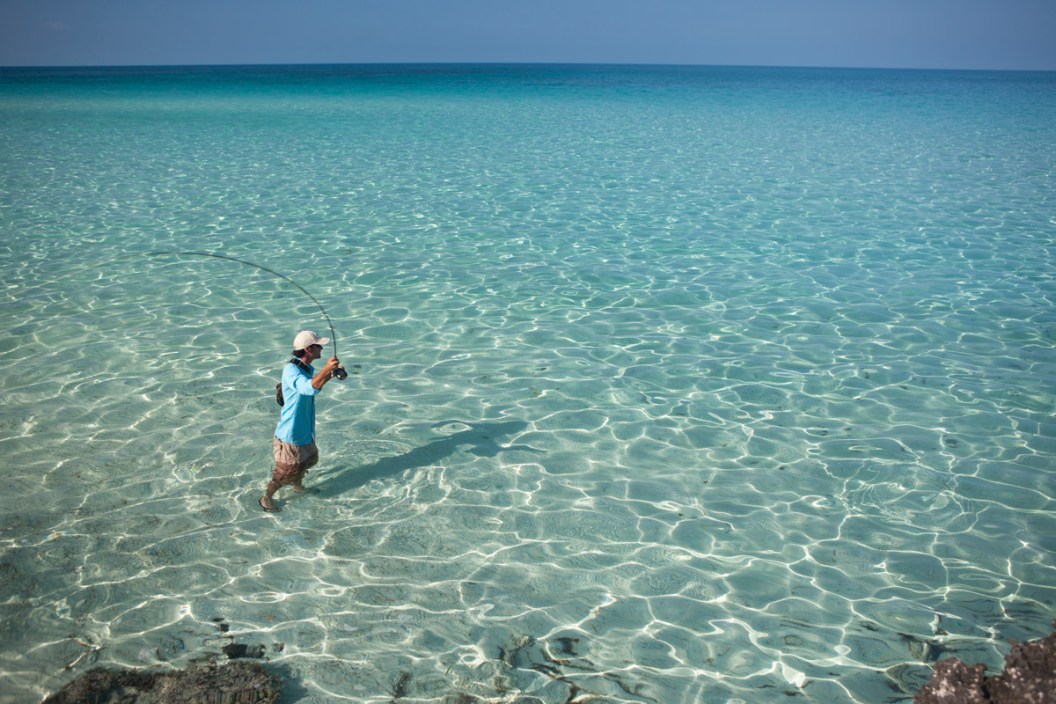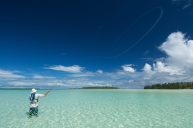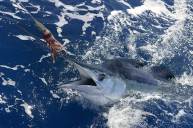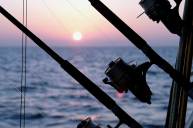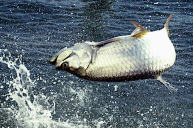Some of the best fishing spots in the world are also some of the most remote, and such is certainly the case with Seychelles. It's very possible you've never heard of this small island nation, which sits just off the coast of Kenya, north of Madagascar in the Indian Ocean. It's remote location lends it equal amounts of mystery and appeal, as it's so secretive, and yet so famous among a specific community of anglers.
You'll also quickly notice in the photos and videos below that the scenery makes this destination a sportsman's paradise.
In this particular piece, we'll talk about the species you can catch there and how to plan your own fishing trip to this saltwater playground.
What species are in the Seychelles Islands?
This island nation is made up of hundreds of individual islands, many of which are coral islands. Because it's so remote—nearly 1,000 miles off the coast of Africa—it doesn't get nearly as much fishing pressure as other nearby angler favorites. Many of the reefs and islands are protected nature reserves, making for prime habitat for fish to grow to gigantic sizes on the flats and just offshore.
The main species associated with the Seychelles is the giant trevally, or GT for short. This fish is pure muscle, can grow to weights over 150 pounds and is incredibly aggressive. In fact, most anglers who have tangled with one say it's the hardest-fighting fish they've ever encountered. Fishing for GTs usually involves giant lures, though. Huge topwater poppers are standard when fishing from a boat, but anglers in the Seychelles also target bluefin trevally via wading and sight fishing shallow reef areas and sand flats around inner islands. Landing any kind of trevally on this kind of equipment is the ultimate test of any saltwater fly fisherman's skills.
Bonefish also land the islands on many anglers' bucket lists as a premier fly fishing destination. What could be a better winter getaway than walking the white sands and wading the crystal-clear blue water in search of huge, hard-fighting bonefish on the fly?
Of course, these incredible fishing grounds hold more than just these two species. You'll also find incredible saltwater fly fishing opportunities for parrotfish, snapper, triggerfish, milkfish, and Indo-Pacific permit in the shallow flats around the islands. And, the variety of fish continues offshore, as boaters can target grouper, marlin, sailfish, barracuda, wahoo, mahe (aka dorado or mahi-mahi), yellowfin tuna, bonito dogtooth tuna, and more.
How to get to the Seychelles Islands
Getting to the Seychelles Islands is going to be the hardest part of your whole trip. You're looking at a minimum of 24-35 hours of flight time to travel there from the United States. And you're likely to have three or more stops along the way. There is only one international airport on the islands and that is near the Seychelles capital, Victoria, which is located on the island of Mahe, one of the largest in the chain.
The primary airports you'll be able to depart from are New York, Atlanta, Los Angeles, Miami, and Houston, so go ahead and anticipate a layover at one of those airports. From there, you'll probably make a stop in London, England, or Dublin, Ireland and then you could end up in any number of places, including but not limited to India, Kenya, Ethiopia, or Abu Dhabi.
These flights are expensive, too, as flights to Seychelles International Airport can easily wear a $5,000 price tag. Remember, you are on a game fishing trip to one of the most remote locations in the world; it's going to be expensive to get there!
Once you arrive on Mahe, you can either fish there or catch a smaller flight to one of the more remote outer islands. And, the Seychelles do have their own currency (called rupees), but most visitors are able to use European euros for purchases, and most fishing charters have their prices quoted in euros, so you'll want to execute an exchange before you get there.
Seychelles fishing charters and guides
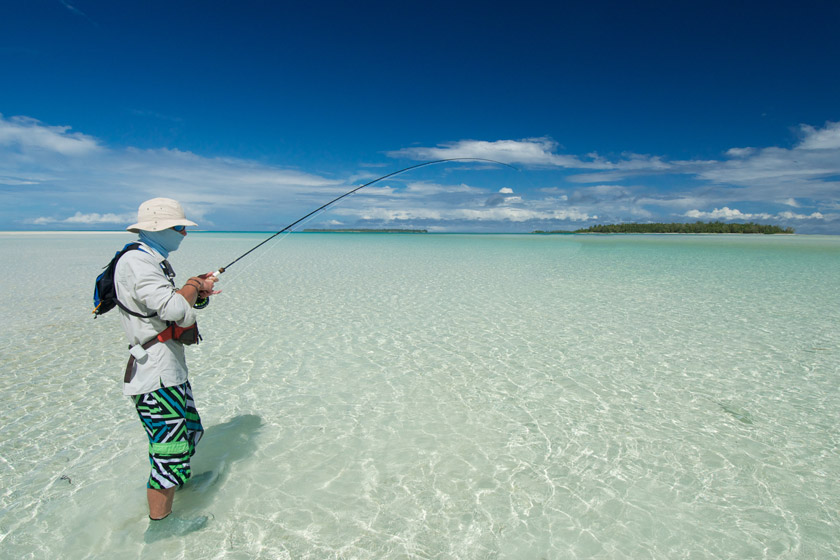
Getty: RainervonBrandis
You'll most likely be hiring a guide or chartering a boat with any trip to the Seychelles Islands. You can organize a DIY trip, but keep in mind some parks and refuge areas are totally off-limits to all fishing activity. A good guide or charter will be able to help you avoid those closed areas.
Fishing guides will also help put you on the fish quickly, too, as opposed to you having to figure things out on your own. Plus, with how much money you're spending, don't you want the best odds of catching fish? There are charters situated on many of the major islands, some of which operate out of resorts and offer full-service Seychelles fishing packages. Those sorts of arrangements can make your planning even easier.
Most of the atoll islands have at least one charter located on them (or a guide service that will take you there). Services are like any other saltwater fishing charters you'll find all over the world. You can often choose between half- and full-day trips. Expect to pay around $500 U.S. for a half-day trip and up to $1,000 U.S. for a full-day excursion.
While these trips aren't cheap, some of them will work snorkeling or sight-seeing into the package, too, giving you more bang for your buck, and the vast majority will cook your catch for you once you get back to shore in the evening.
When to go and what to bring
Because the Seychelles are in a warm climate, you can go fishing just about any time of the year, but the most popular seasons are often subject to the trade winds.
From December until March, you'll likely encounter more stormy weather, which leads many guides to booking up their schedules with trips in the more favorable months. So, it may be wise to schedule your trip a year or more in advance.
As for what to bring, temperatures remain warm throughout most of the year, so you can usually get away with your classic summer fishing clothes, but it may be wise to pack some rain gear just in case.
Fishing tackle, on the other hand, wholly depends on what you plan to target. If you plan on chasing GTs and other hard-fighting species, bring the heaviest gear you own. Specialty poppers for GTs are sold online, but be prepared to spend as they're around $25-$50 each. Fortunately, though, most charters down there will have all the tackle you need, including those bigger lures for targeting large, aggressive fish.
Oh, and most importantly, don't forget to bring a good camera. A Seychelles big-game fishing trip is the experience of a lifetime, so you'll undoubtedly want to have something to preserve the memories!
For more outdoor content from Travis Smola, be sure to follow him on Twitter and check out his Geocaching and Outdoors with Travis Youtube channels.
